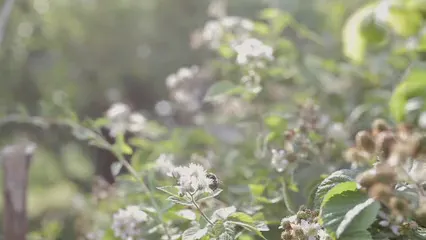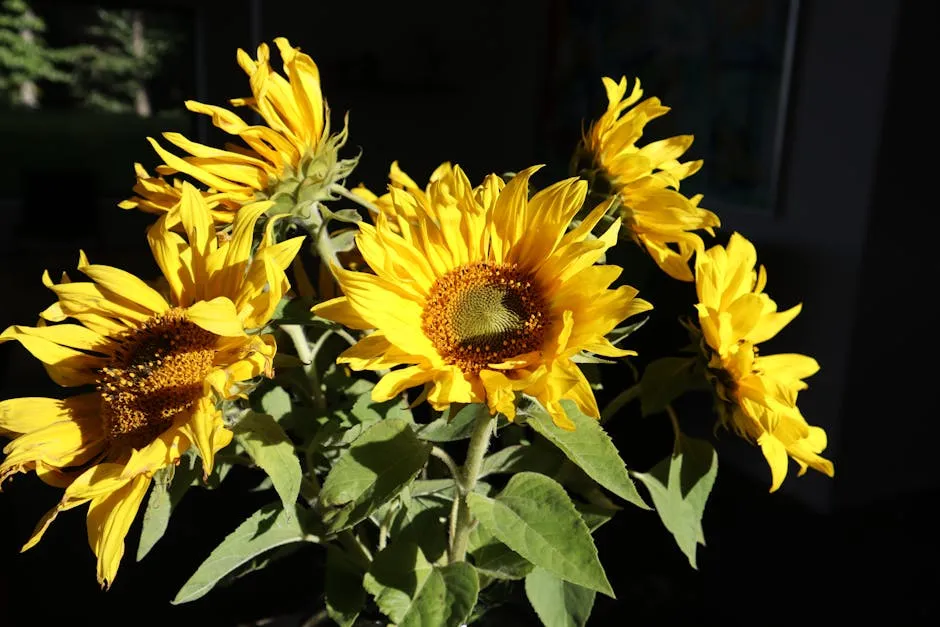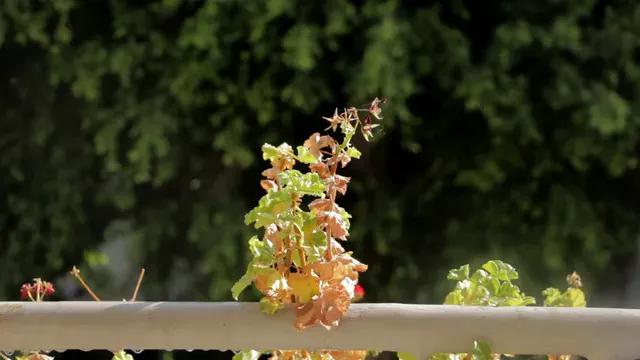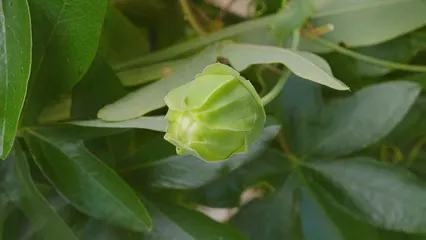

Compass Plant Michigan for Sale: Your Ultimate Guide to Silphium laciniatum
Introduction
In the vast tapestry of Michigan’s native flora, few plants command attention quite like the Compass Plant (Silphium laciniatum). Known for its towering stature and remarkable resilience, this perennial wildflower is not just a feast for the eyes but also a vital resource for local wildlife. Imagine strolling through your garden and spotting those stunning yellow flowers peeking above your other plants! It’s a sight that brings joy to gardeners and nature lovers alike.
So, where can you get your hands on one of these beauties? You might find yourself pondering this question as you learn more about the Compass Plant. Fear not! We’re here to guide you through everything you need to know about purchasing the Compass Plant in Michigan.
From its stunning attributes and ecological benefits to where to buy it, we’ve got all the angles covered. Did you know that the Compass Plant can grow up to 12 feet tall? That’s taller than most of your friends! It’s not just a pretty face; this plant also plays a crucial role in supporting local ecosystems. Its leaves cleverly align in a north-south direction, minimizing sun exposure and conserving water. How cool is that?
So, whether you’re a seasoned gardener or just dipping your toes into the world of plants, buckle up for a journey through the world of Compass Plants! We’ll share everything from ideal growing conditions to local nurseries and online options for buying this magnificent plant. Ready to transform your garden into a vibrant haven? Let’s dig in!

Summary
The Compass Plant is a stunning native wildflower that thrives in Michigan’s landscape. It grows tall, often reaching heights of up to 12 feet, and features striking yellow flowers that bloom from July to September. This perennial not only adds visual interest to your garden but also plays a crucial role in supporting local ecosystems. Its deeply lobed leaves align in a north-south direction, which is where it derives its name, helping the plant conserve water and maximize sunlight exposure.
In this guide, you will learn about the various purchasing options for Compass Plants available in Michigan, including prices ranging from $5.00 to $30.00 based on size and seller. We will cover the plant’s ideal growing conditions, including its preference for full sun and well-drained soil, making it suitable for various garden styles.
Additionally, we will highlight the ecological advantages of planting Compass Plants, such as their role in attracting pollinators like bees and butterflies and providing habitats for birds. You can also expect tips on companion planting to create a thriving garden ecosystem.
Companion planting can enhance your garden’s biodiversity and improve plant health, making it a great strategy for gardeners. Companion planting strategies for increased yield
Finally, we will explore local nurseries, online retailers, and conservation organizations offering Compass Plants for sale, ensuring you have all the resources at your fingertips to bring this stunning plant into your garden. Curious about the best planting practices or how to create a bird-friendly space? Keep reading to discover all the essential details!

The Beauty of the Compass Plant
Unique Features
The Compass Plant, or Silphium laciniatum, is truly a towering marvel. It can grow between 5 to 12 feet tall, making it a standout in any garden. Its bright yellow flowers bloom from July to September, adding a splash of color to the landscape. The flowers resemble sunflowers, radiating their cheerful hues and attracting attention from nearby visitors—both human and animal alike.
One of its most fascinating features is its leaf orientation. The deeply lobed leaves align in a north-south direction. This clever strategy minimizes sun exposure during the hottest part of the day. It’s nature’s way of ensuring the plant conserves water and maximizes sunlight absorption. Who knew a plant could be so smart?
Ecological Benefits
The ecological advantages of the Compass Plant are impressive. It supports a variety of local wildlife, making it a beneficial addition to any garden. Its robust structure provides perches for birds, who flock to it for seeds in the fall and winter months. You might even spot a few feathered friends enjoying a meal while you sip your morning coffee!
Additionally, Compass Plants are a haven for pollinators. Bees and butterflies are particularly drawn to their flowers, helping to ensure a thriving ecosystem. Not only do these pollinators benefit, but they also contribute to the health of your garden. A plant that attracts bees? Yes, please!
By planting Compass Plants, you’re not just beautifying your space. You’re creating a vibrant habitat for wildlife, fostering biodiversity right in your backyard. So why not plant a few and watch your garden come alive with color, sound, and life? It’s a win-win for you and the environment.
In the next sections, we will highlight companion planting strategies. These tips will help you create a flourishing garden ecosystem, ensuring every plant complements one another beautifully.
Stay tuned for all the essentials about finding Compass Plants for sale—both locally and online. Your garden is about to become the talk of the neighborhood!

Growing Conditions for Compass Plants
Ideal Soil and Sunlight Requirements
When it comes to the Compass Plant, a little soil science goes a long way. This resilient wildflower thrives in well-drained soil types, particularly loamy and sandy soils. Loam is the goldilocks of soil—just the right mix of sand, silt, and clay. It provides excellent drainage while retaining the necessary moisture. Sandy soil, on the other hand, allows for rapid drainage, which the Compass Plant appreciates. So, if your garden has sandy patches, this plant will feel right at home.
Sunlight is another key player in the Compass Plant’s growth story. It adores full sun! That’s right; it craves those bright rays like a sunbather at the beach. Ideally, aim for at least six hours of direct sunlight each day. While it can tolerate partial shade, it doesn’t quite shine as brilliantly when tucked away in the shadows. So, if you want your Compass Plant to soar, find a sunny spot in your garden.

Watering and Maintenance
Here’s where the Compass Plant truly shines: its drought resistance. Thanks to its legendary taproot, which can reach up to 15 feet deep, it can tap into moisture reserves that other plants can only dream of. This means once established, it can withstand dry spells without breaking a sweat. Talk about a water conservation hero!
For new gardeners, a little care will go a long way in getting your Compass Plant off to a great start. Initially, regular watering is essential to help the plant establish itself. Aim for moist, but not soggy, soil. Once it’s rooted, you can ease off the watering schedule. This plant is a tough cookie that prefers to dry out between watering sessions. Just keep an eye on it during those hot summer days—if the leaves start to droop, it’s time to give it a drink.
Maintenance is minimal after establishment. The Compass Plant is quite the low-maintenance companion in your garden. Just keep an eye out for any unwanted weeds encroaching on its territory. A light hand with the pruning techniques in early spring will also help promote healthy growth. Remember, this plant can reach impressive heights, so consider staking if it starts to lean. With these tips, you’ll have a thriving Compass Plant that not only enhances your garden but serves as a beacon for pollinators too!

Where to Buy Compass Plants in Michigan
Local Nurseries and Garden Centers
If you’re eager to add the Compass Plant to your garden, local nurseries are a fantastic place to start. Here are some recommended spots in Michigan where you can find this stunning native plant:
- Michigan Wildflower Farm
Contact: Visit Website
Price: $30 per ounce
Details: Offers a variety of sizes and shipping options. - Kent Conservation District
Phone: 616-222-5846
Price: $6.00
Availability: Currently out of stock, but worth checking back! - Blazing Star Butterfly Garden
Contact: Visit Website
Price: $7.50
Details: Offers a 3-pack of pots; however, please note that this is pickup only. - Designs by Nature
Contact: Visit Website
Price: $5.00
Details: Great option for those looking for a budget-friendly choice. - Birdbath
Price: $25.99
Details: Enhance your garden with a charming birdbath that attracts feathered friends and adds beauty to your garden.
Each of these nurseries provides a unique selection of Compass Plants in different sizes and prices. It’s a good idea to call ahead to confirm availability and get all the details!

Online Retailers
If you prefer to shop from the comfort of your home, several online retailers also offer Compass Plants. Here’s a brief overview:
- Natural Communities
Price: Starts at $165 for a 50 Plug Flat
Shipping: Calculated at checkout. Great for bulk orders! - Up Native Plants
Price: $6.25 for a quart size
Details: Ideal for those looking for individual plants shipped directly to their door. - New Leaf Natives
Price: $6.75 for a 3″ pot
Shipping: Available, allowing you to easily add this plant to your collection. - Raised Garden Bed Kit
Price: $149.99
Details: Consider a raised garden bed kit for an organized planting space that maximizes your gardening potential.
When comparing prices, consider shipping costs and the sizes offered. Some retailers may have a minimum order requirement, so keep that in mind as you shop. The Compass Plant is a fantastic addition to any garden, and with these options, you can easily find one to bring home!

Conservation Organizations
When it comes to purchasing native plants, conservation organizations are a fantastic option. These entities are dedicated to preserving Michigan’s natural heritage while promoting biodiversity. They often host plant sales, allowing you to buy native species like the Compass Plant directly from the source.
Organizations such as the Kent Conservation District and Michigan Wildflower Farm specialize in native flora. They not only sell plants but also provide education on the importance of native species. By purchasing from these groups, you contribute to their conservation efforts. Your money helps fund habitats, educational programs, and research initiatives. It’s like giving a big high-five to Mother Nature!
Buying from conservation organizations also guarantees that your Compass Plant is locally sourced. This means it’s more likely to thrive in Michigan’s unique climate. Plus, you can feel good knowing your purchase supports ecological balance. It’s a win-win situation—your garden flourishes, and local wildlife benefits!

Companion Planting with Compass Plants
Recommended Companion Plants
Companion planting is a gardening technique that can enhance biodiversity and improve plant health. When it comes to the Compass Plant, several companions shine alongside it. For instance, Big Bluestem is a tall grass that pairs beautifully with the Compass Plant. They both thrive in similar conditions, creating a harmonious garden aesthetic.
Rattlesnake Master, with its unique spiky flowers, is another excellent choice. This plant attracts various pollinators, further enhancing your garden’s biodiversity. You could also consider adding Wild Bergamot and Joe Pye Weed, both of which bloom at the same time as the Compass Plant. Together, these plants create a vibrant palette that delights the eyes and supports local wildlife.

Companion planting not only looks good but also offers ecological benefits. It promotes a more diverse ecosystem, attracting beneficial insects and pollinators. This leads to a healthier garden overall, reducing the need for chemical interventions. Plus, it makes your garden a hotspot for local birds and bees, who will appreciate the buffet of blooms!
Designing a Bird-Friendly Garden
Creating a bird-friendly garden is easier than you might think! Start by incorporating a variety of plants that provide food and shelter. The Compass Plant, with its towering height and sturdy structure, offers perfect perches for your feathered friends.
To attract birds, consider adding plants that produce berries or seeds, such as native grasses and flowering plants. It’s essential to create layers in your garden—tall plants like the Compass Plant can stand proudly alongside shorter varieties. This diversity in height provides safe spaces for birds to explore.
Additionally, water features like birdbaths are excellent additions. They provide hydration and a place for birds to splash around. Regularly changing the water keeps it clean and inviting.
Lastly, limit the use of pesticides in your garden. Chemicals can harm not only the pests but also the beneficial insects and birds. By fostering a diverse and healthy ecosystem, you’ll create a haven for both birds and pollinators. Your garden will flourish, becoming a vibrant sanctuary for wildlife!

Conclusion
The Compass Plant is more than just a beautiful addition to your garden; it’s a vital part of Michigan’s natural ecosystem. By choosing to plant Silphium laciniatum, you’re enhancing your space’s aesthetic appeal and contributing to the sustainability of local wildlife. This remarkable perennial not only stands tall with its striking yellow flowers but also supports a diverse range of creatures.
With various purchasing options available, including local nurseries, online retailers, and conservation organizations, bringing home a Compass Plant has never been easier. Each option offers unique benefits—whether it’s supporting local conservation efforts or enjoying the convenience of online shopping.
Remember to consider companion planting to maximize your garden’s potential. Pair the Compass Plant with species like Big Bluestem or Rattlesnake Master to create a thriving ecosystem. Additionally, designing a bird-friendly garden can enhance your outdoor space’s charm while supporting local wildlife.
So why wait? Transform your garden into a vibrant haven filled with life, color, and beauty. The Compass Plant can be your first step toward a more sustainable and lively landscape. Happy planting!

FAQs
What is the best time to plant Compass Plants?
The ideal time to plant Compass Plants is during spring or early fall. Spring planting allows the roots to establish before summer heat. If you choose fall, ensure it’s early enough for roots to grow before winter. Prepare the soil by loosening it and adding organic matter. A healthy start leads to a stunning garden!
How long does it take for Compass Plants to bloom?
Patience is key when it comes to Compass Plants. After planting, expect blooms within two to three years. Initially, the plant focuses on strengthening its roots. Once established, you’ll be rewarded with vibrant yellow flowers from July to September. It’s like waiting for your favorite show to return—totally worth it!
Can Compass Plants survive in partial shade?
Compass Plants prefer full sun but can tolerate partial shade. If planted in less sun, their growth may slow down, and they might not bloom as profusely. To achieve the best results, aim for at least six hours of sunlight daily. Your plant will thank you with a stunning display!
Are Compass Plants deer resistant?
Yes, Compass Plants are generally deer resistant! Their tough, rough leaves aren’t appealing to hungry deer. Additionally, their height and sturdy structure help deter these garden pests. However, hungry critters are unpredictable, so it’s wise to keep an eye out. You might want to have some backup plants just in case.
How deep do Compass Plant roots grow?
Compass Plants boast impressive taproots that can reach depths of up to 15 feet! This deep-rooted system allows them to access moisture from below. It also contributes to their drought resistance. The robust roots help anchor the plant and keep it standing tall, even on windy days. So, when planting, give them room to stretch down and thrive!
Stay organized and keep your garden thriving with a gardening journal that helps you track your planting and growth progress!
Please let us know what you think about our content by leaving a comment down below!
Thank you for reading till here 🙂
All images from Pexels



